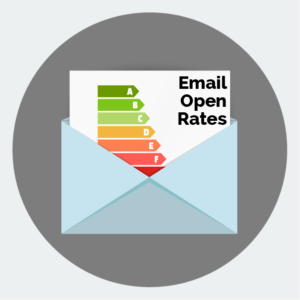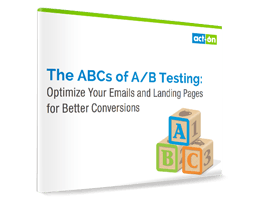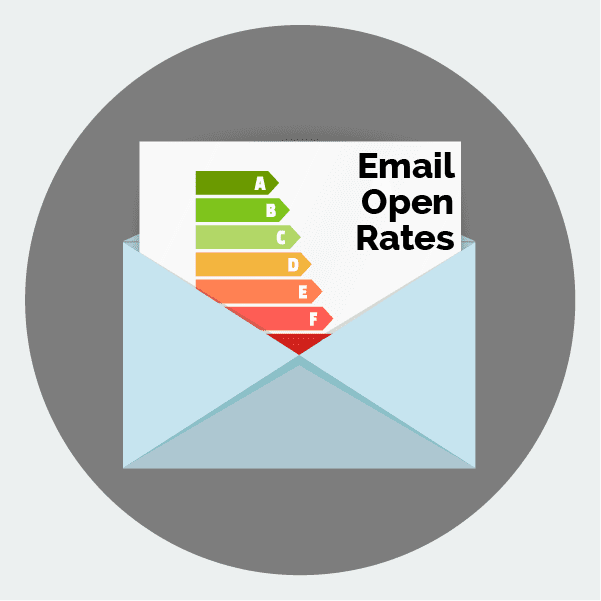 As a deliverability specialist, one of the most frequent gripes I hear from my clients is low open rates. Across the industry, regardless of which email service provider (ESP) is involved, I can guarantee you this is on the top of the list as far as customer complaints go.
As a deliverability specialist, one of the most frequent gripes I hear from my clients is low open rates. Across the industry, regardless of which email service provider (ESP) is involved, I can guarantee you this is on the top of the list as far as customer complaints go.
But blaming the ESP may be the wrong response. What many email marketers forget is that open rates are, in most part, under their control. As a deliverability specialist for an industry-leading ESP, I can tell you that most of the factors under my control are related to the actual delivery of our clients’ emails. When a client comes to me with concerns about their low open rates, the first thing I do is check their delivery and bounce rates. If their bounces are high and delivery rates are low then yes, that can be a contributing factor to their open rates, but if it’s the opposite situation (low bounces, high delivery rates) I find myself in a stalemate.
Any ESP has limited control beyond the realm of deliverability. But you, the email marketer, have the opportunity to take full rein over your email marketing efforts. Take a step back, breathe, and look at the numbers. I like to think of email marketing as a science. Now let’s address what steps you as an email marketer can take to apply the scientific method to increase those metrics.
As marketers, we are researchers who are (or should be) always experimenting, and the open rate is just one of our test subjects. We can follow the scientific method:
The first step is asking a question. It could be as simple as, “Why would a recipient want to open my email?” The answer, of course, is that we have valuable information that needs to be seen by the whole world, or that’s what we all like to think. This is a valid question, though, and many of you should be asking this of yourselves before sending your emails out.
The second step is doing background research. You know best what background information you need, but understanding who your recipients are, and therefore what they might be interested in, is a very good place to begin.
Next, construct a hypothesis. This is the basis of your experiment and how it will be conducted. Take an educated guess about a solution. One hypothesis could be, “If I have a call to action in my subject line, then my open rates will increase.” Now the fun stuff begins. You get to test out your hypothesis by doing experiments; A/B testing should be your best friend by now.
For example, suppose you are going to test the effect adding a call to action to your subject line has on open rates:
- Segregate your list with an unbiased segmentation.
- Split your list up evenly and send one half without a call to action in the subject line and the other half with.
This is purely an example; there are many ways to approach A/B testing.
The final step: Analyze your results and determine if your hypothesis is correct.
Here’s a list of tips that will assist you with increasing those darn open rates. Remember, you can apply the scientific method to all these tips.
1. Craft your subject line content carefully
Like dating, first impressions can have a major effect on open rates. What is the recipient going to view first, and are they going to be impressed? Here’re some key points to keep in mind:
- Be concise – effective subject lines are short, descriptive, and to the point.
- Avoid exclamation points and excessive caps (no SHOUTING AT PEOPLE!).
- Avoid buzzwords such as “free,” “help,” etc. These don’t trigger spam warnings as much as they trigger reader wariness.
- Use A/B testing to test your subject lines.
For more tips on email subject lines, check out Act-On’s ebook – 12 Tips for Amazingly Effective Email Subject Lines.
2. Segment your list
If you have a great understanding of your recipients, then you will likely have a great opportunity to segment your lists and campaigns. The idea behind this is to move away from mass email blasts. Those days are long gone and are archaic in today’s marketing environment.
You can segment your audience by geographic, demographic, psychographic, and behavioral attributes and factors. The key point here is to send messages of specific interest to a targeted, homogeneous group. I am often surprised how many of my clients don’t segment their lists. Just do it; it won’t hurt, and it will help.
3. Be thoughtful about your sending schedule
Many resources on the Internet suggest picking a sending schedule and sticking with it. In many ways I disagree. As I said earlier, you are a researcher in this particular field of email marketing science. If you understand your audience, then you should have an idea when they would be most likely to open your emails. And even if you have it nailed now, does it change during holidays? Does it change with the seasons?
For example, if you send to business professionals on the east coast and your company is based on the west coast you must be aware of the time difference; this is where geographic segmentation comes into play. Let’s assume the business professionals in your audience are more willing to open emails early in the morning. You must adjust your sending times to accommodate those geographic segmentation differences.
Test, test, and test your emails to get a better grasp of your sending schedule to your different targeted audiences.
4. Manage your list
The last, and maybe one of the most important points, is having great lists. Key points to consider here:
- Buying purchased data is not an industry best practice and can lead to many deliverability issues. Data hygiene providers, like Webbula, can eliminate email addresses that can cause issues.
- Segment your list by engaged and unengaged. Send more often to engaged; send re-engagement emails to your unengaged recipients.
- Unengaged addresses should be removed from your lists after a predetermined timeframe. Benchmark timeframes can depend on the industry you’re in; we recommend six months or a timeframe aligned with your sales cycle depending if your organization is heavily sales-oriented.
And this isn’t part of your list, but it affects how your list responds: Your “From” address should allow your audience to clearly identify who you are, at a glance.
Conclusion
If you find your open rates struggling, follow these tips. Always do your research, and experiment with your hypothetical solutions around these tips.
And remember:  Some recipients just won’t be responsive to, or interested in, the contents of your email campaigns. If they aren’t interested, maybe that’s your fault; you could be sending email that doesn’t interest them. Segment your lists so you can send targeted information that’s more likely to interest the recipient. If they continue to be non-responsive, then maybe it’s time to remove those unengaged recipients from your lists.
Some recipients just won’t be responsive to, or interested in, the contents of your email campaigns. If they aren’t interested, maybe that’s your fault; you could be sending email that doesn’t interest them. Segment your lists so you can send targeted information that’s more likely to interest the recipient. If they continue to be non-responsive, then maybe it’s time to remove those unengaged recipients from your lists.
Last, but never least: Always remember to test and experiment before committing all your resources to a campaign. Download Act-On’s free eBook – The ABCs of A/B Testing and let A/B testing become your best ally.
